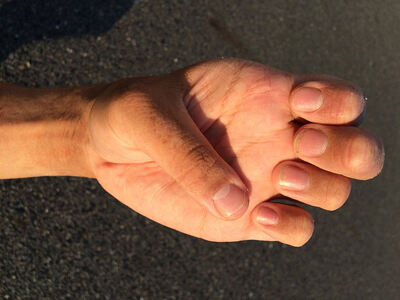Psoriasis: Locations on the Body To Keep an Eye On

Psoriasis is a condition that affects the skin and can show up in any part of the body. Some people have mild cases of psoriasis with only 10% of their skin affected, while others have very severe cases that have almost 80% of their skin covered by the condition. The most common type of psoriasis that is visibly seen on the skin is plaque psoriasis. Up to 30% of patients with psoriasis can develop psoriatic arthritis which affects the joints and causes inflammation and pain to the joints. Although these skin problems have distinct symptoms in terms of where they occur, many people end up mistakenly treating other conditions with no success. Therefore, how do you spot psoriasis?
How to Tell If You Have Psoriasis
It may take a while for some people to realize that they have psoriasis depending on where the lesion is. For example, scalp psoriasis might be confused for dandruff, especially if it is mild. However watch out for these to know if you have psoriasis:
- Patches of red inflamed skin that is covered with dry silvery scales. These patches are itchy and may be painful and sometimes they crack and bleed.
- Small bleeding areas where the skin has been scratched.
- Discolored toenails and fingernails that may start to detach from the nail bed.
Where to Spot Psoriasis
These inflamed scaly patches pop up anywhere in your body. But the most common areas affected are:
-
Scalp: Scalp psoriasis can either be mild which is easy to treat and manage or severe with thick crust-like plaques covering the entire scalp. Scalp psoriasis can also extend to the headline and forehead as well as the back of the neck and the place around the ears.
-
Palm, Elbow, Knees, and Feet: Treatment on these areas has to be done promptly as the flares can be accompanied with cracking, swelling, blisters, and bleeding.
-
Nails: Psoriasis causes discoloration of the finger and toenails in almost 50% of the patients. It can present with pitting of the nails or discolorations of the nail. In some cases the nail may lift up from the nail bed.
-
Skin folds/Genitals: Inverse psoriasis affects this sensitive area and appears as red, moist sometimes cracked plaques in skin creases, such as in the genital area or under the breasts. The genital area (The penis, vagina and the groin area) requires very careful care and treatment because of its sensitivity. Most people before realizing that it’s Psoriasis confuse it for an STD or fungal infection.
Each of these areas will require different treatment as the skin in each of these areas is different. Although some people just have one area affected, others have most parts of their bodies affected making the treatment to be more intense.
Clothing for Psoriasis Sufferers
Most patients will use clothing to hide their symptoms. Nonetheless, it is important to note that clothing can aggravate the condition and cause flare-ups as well. Take these into consideration when choosing what to wear:
- Wear pure cotton clothes because they are absorbent thus reducing sweating and even overheating.
- Wear loose clothes as tight-fitting ones will cause constant rubbing on the affected area.
- Use fragrance-free laundry detergents to reduce on itch and flare-ups caused by the chemicals and additives in the detergents.
